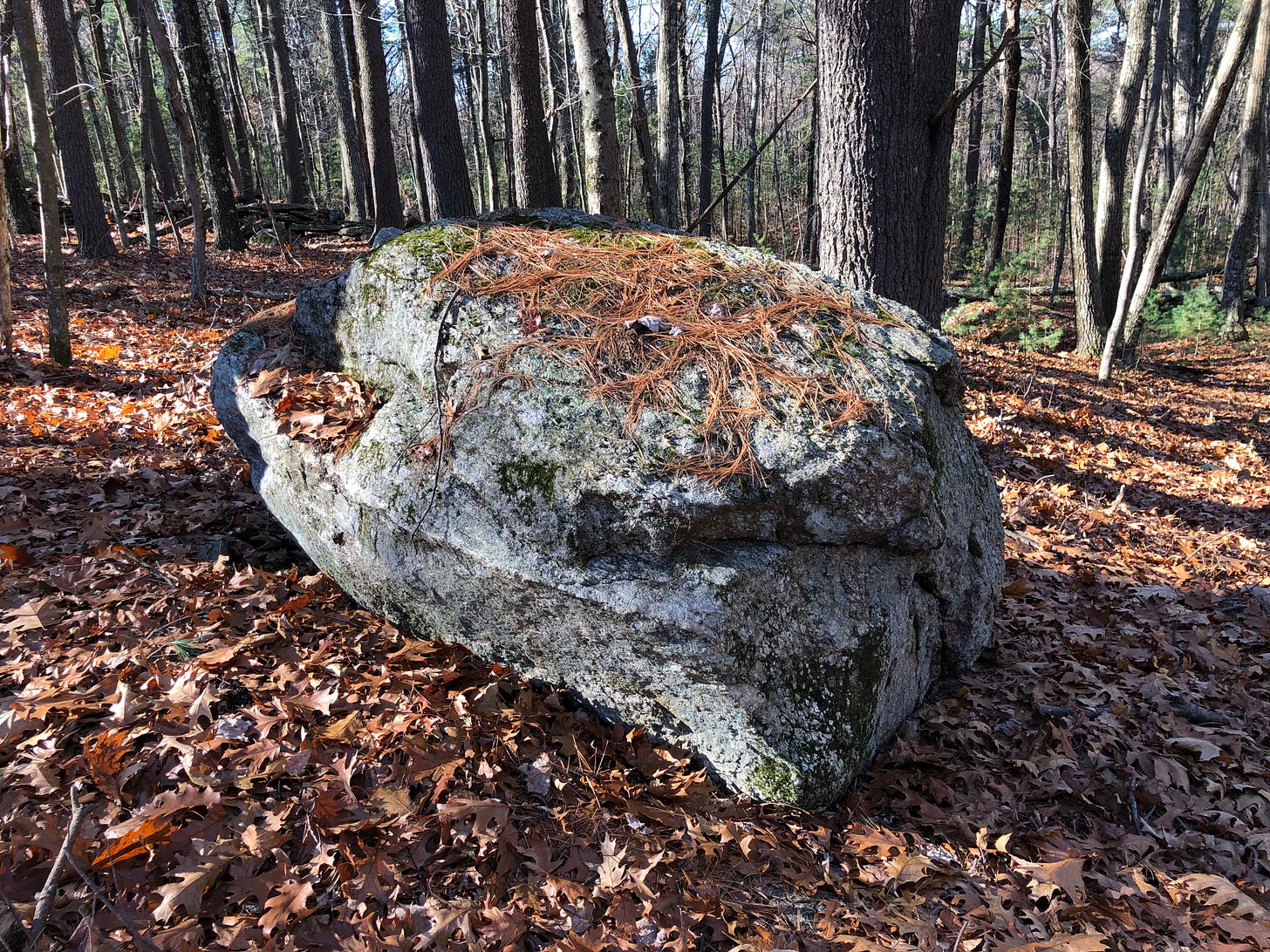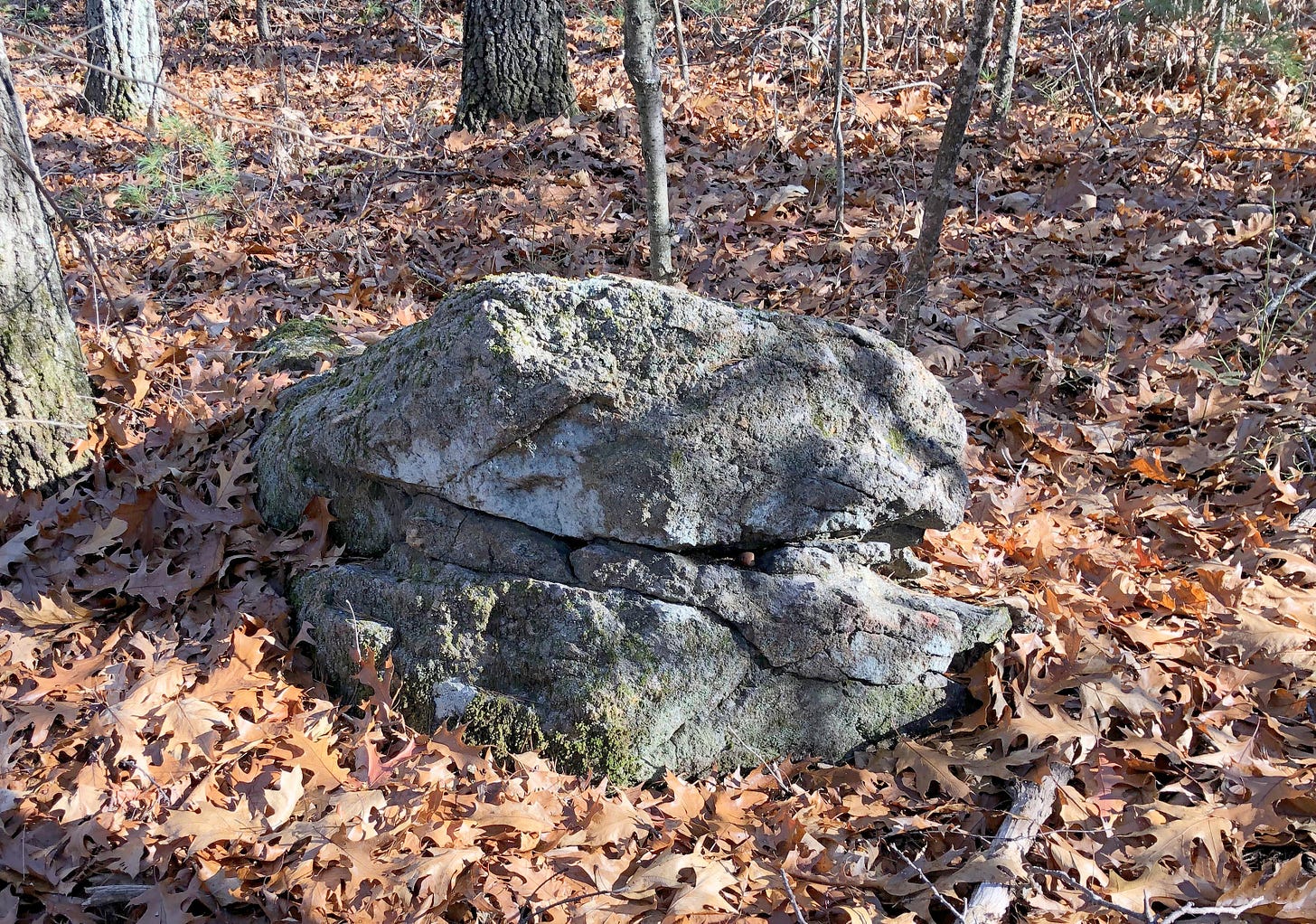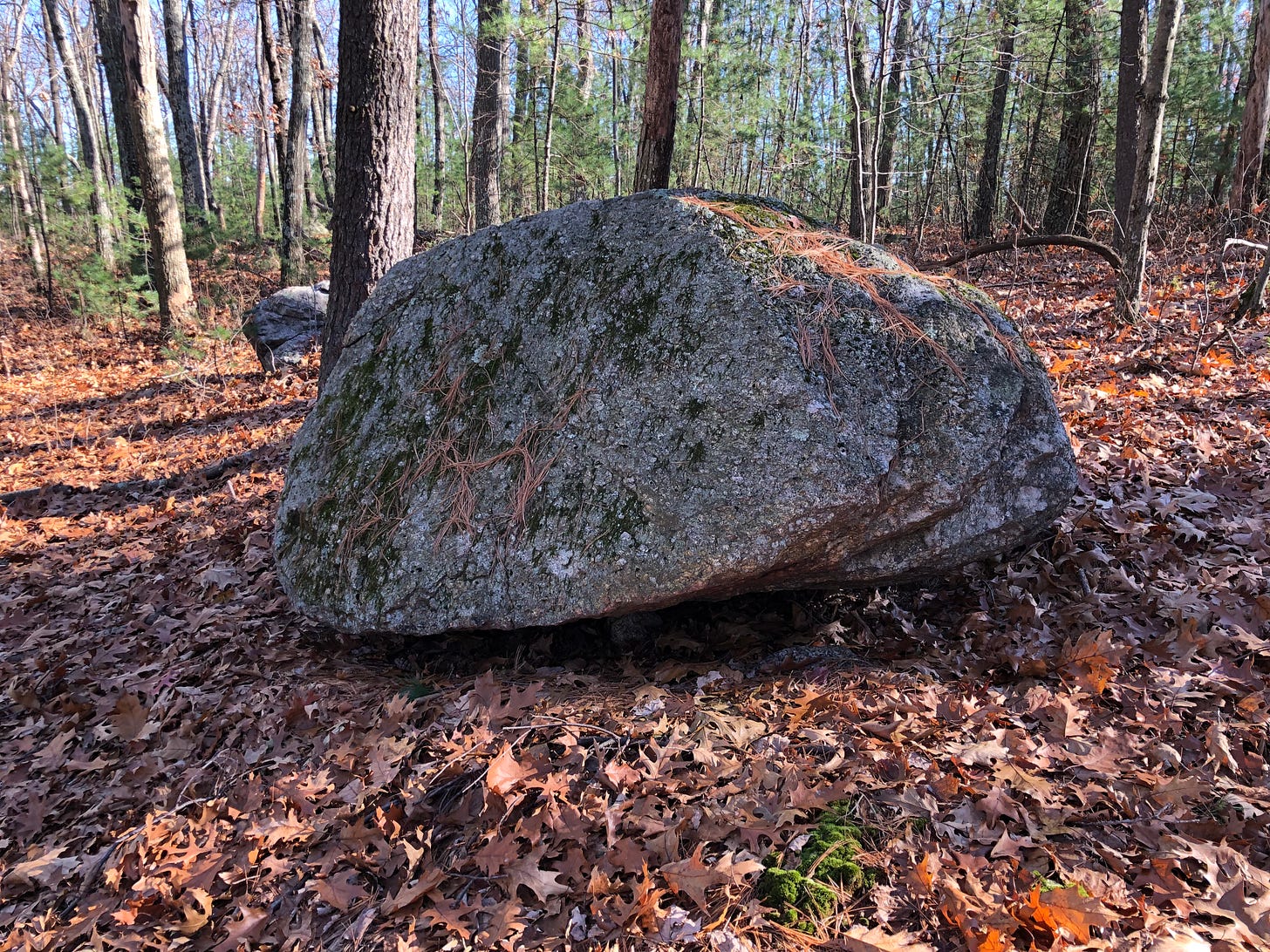Rediscovering Kequasagansett 7
Possible Sacred Stone and Water Works Around Gates Pond in Berlin, Massachusetts
The Hilltop - A Sacred Precinct?
My look at the area around Gates Pond in Berlin, Massachusetts continues with the area on the hilltop north of the pond.
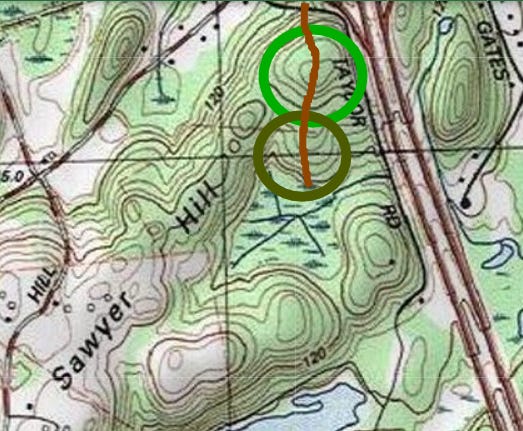
On Day One, I came up alongside the central wall from the wetlands below. On Day Two, I passed the wetlands on the park’s access road, and came in on the eastern side, to check out the lower part of the hill and area below.
I was here investigating north of the pond in the first place because stone site investigator Peter Waksman had made some interesting finds in this general vicinity more than ten years ago, detailed in posts on his long-running blog Rock Piles: http://rockpiles.blogspot.com/2011/03/sawyer-hill-gates-pond-berlin-ma.html.
I’ve learned a great deal from the work of those who have come before me in this field. Waksman’s blog is a treasured resource. Those writings of his from 2011 inspired my first visits to Gates Pond as an adult. I’d followed those ten-year-old posts here over a year ago, but hadn’t found what Waksman had — I’d managed to make some new discoveries, instead.
There is so much to see here! On this year’s visits, I did find some of the stonework Waksman had posted about a decade back, on the southwestern hillside. But, once again, I found more.
Part One - The Eastern Side of the Central Stone Row
Although somewhat drier than the swamp to the south and west, the lower hillside area was still a bit marshy, covered in years of fallen leaves now covered by a fresh coating. It had also been raining for a few days, earlier in the week, leaving everything just a little… moist.
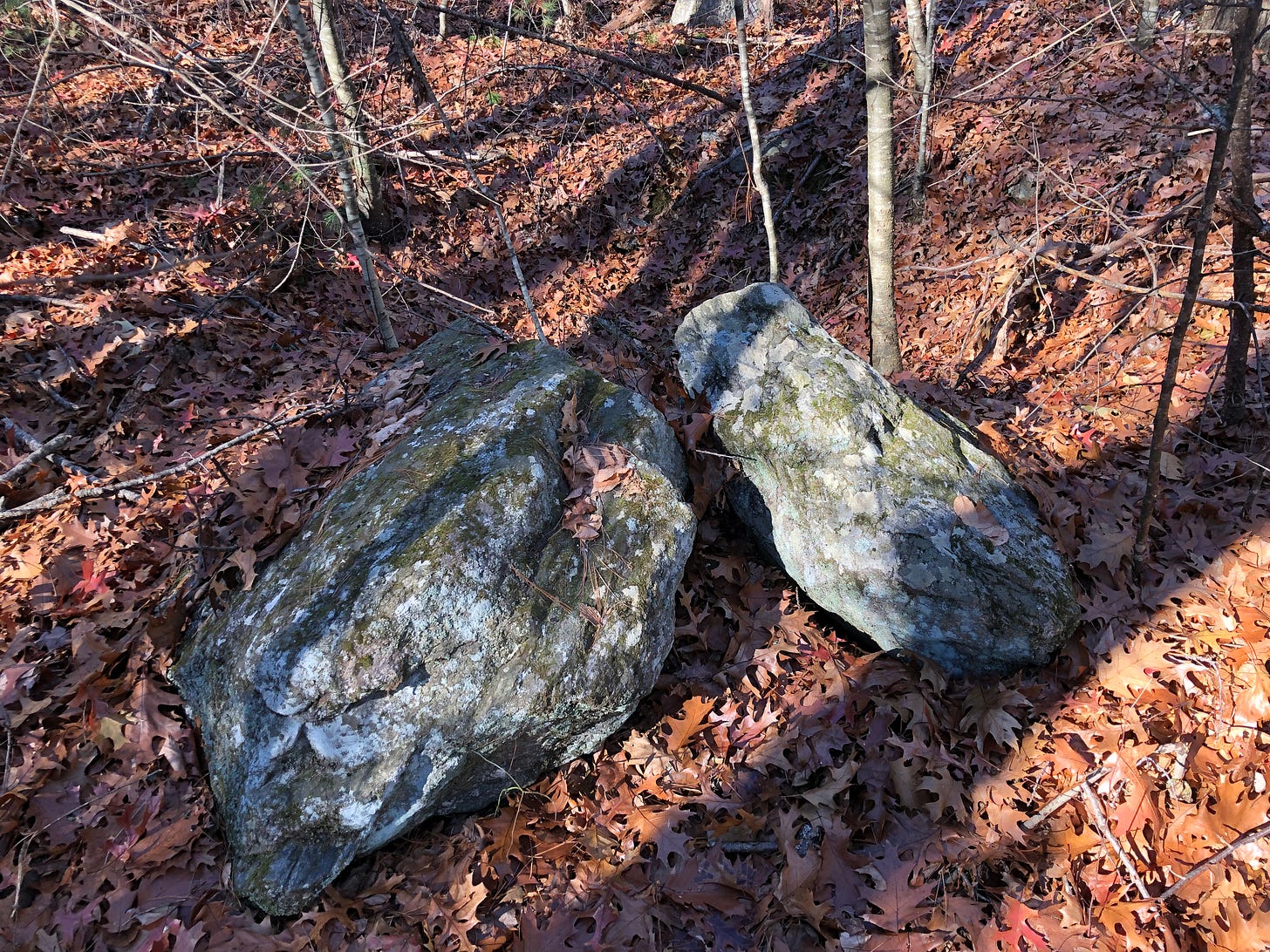
At this southern base of Sawyer Hill, there are several cases where strangely split stones sit in groups next to hollows in the ground.
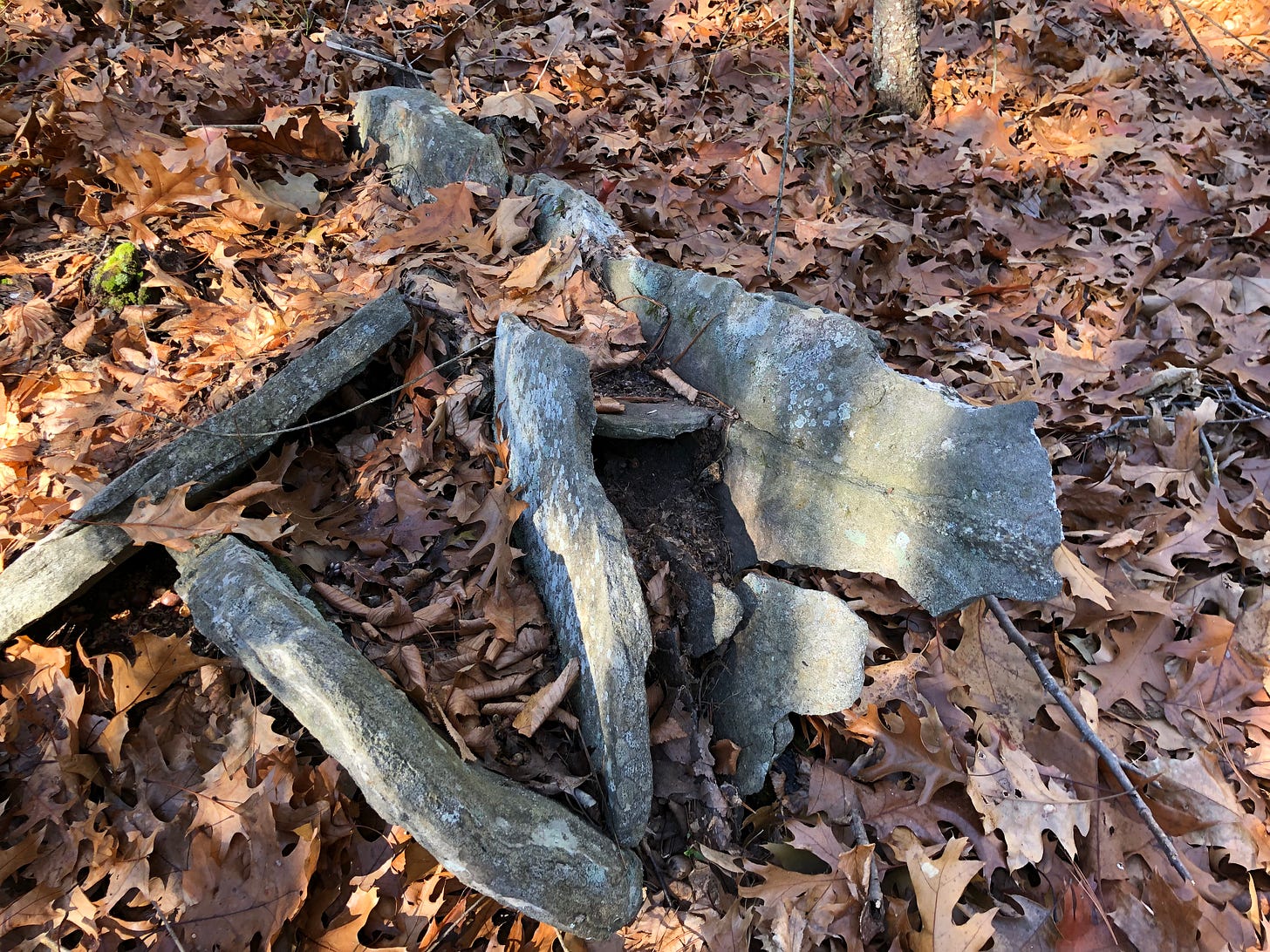
Though perhaps some hollows and splits stones are attributable to the damage root systems do to stones they entangle with and later dredge up as the old tree falls over, uprooted, there are larger possible, more deliberate looking rockpiles next to these hollows once we begin to climb the hill.
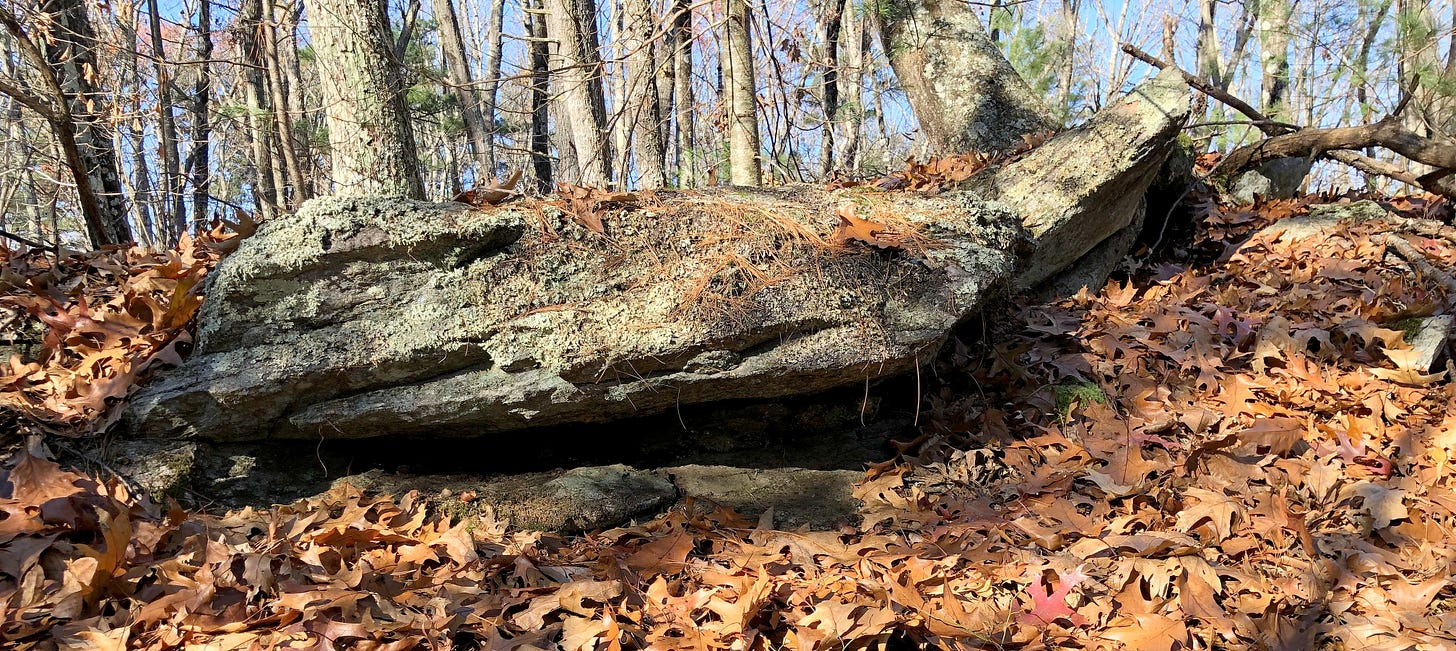
Climbing the hill, we begin to see more stones stacked and arranged. A possible wing shape stone sits atop a cliff and appears deliberately perched there.
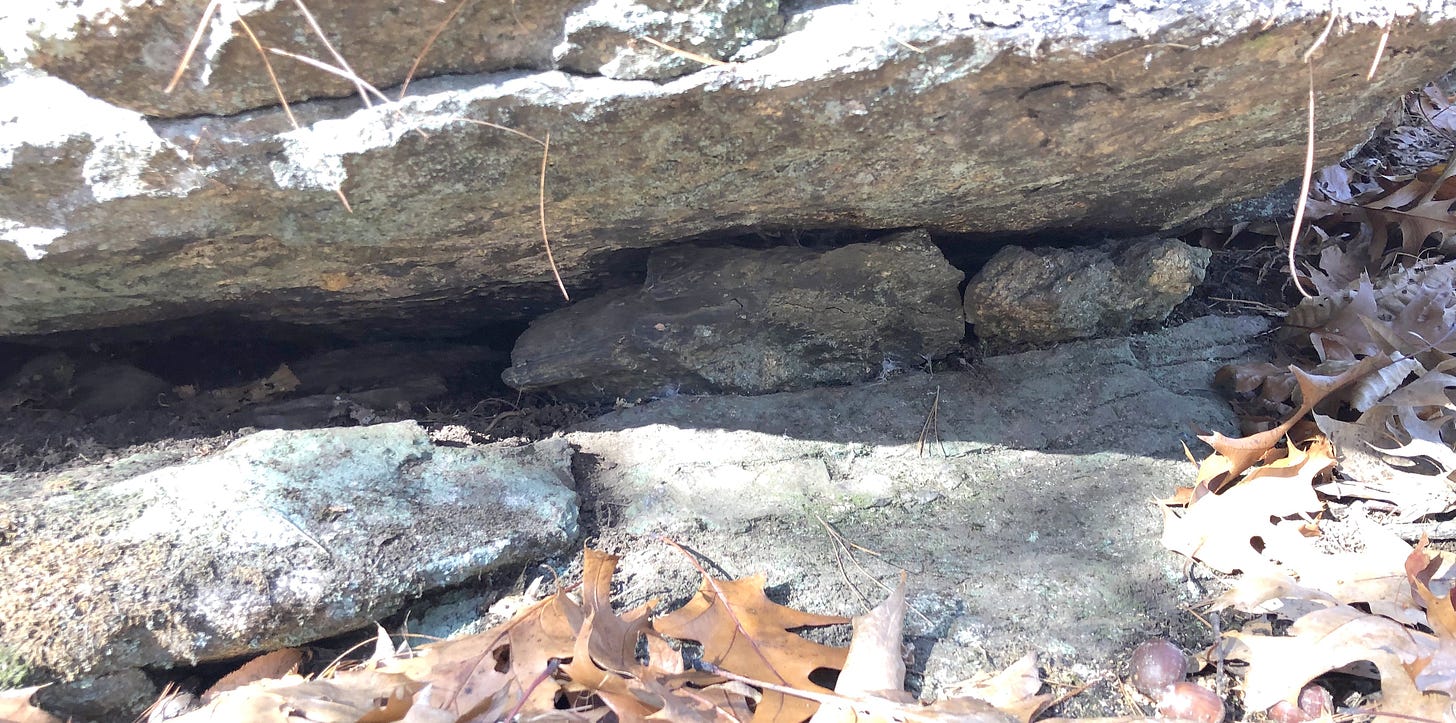
Still, the stonework on this eastern hillside side pales in comparison to what I found on the other side of the hill. My thought was that, perhaps, this was due to the fact this side appears to have been more settled.
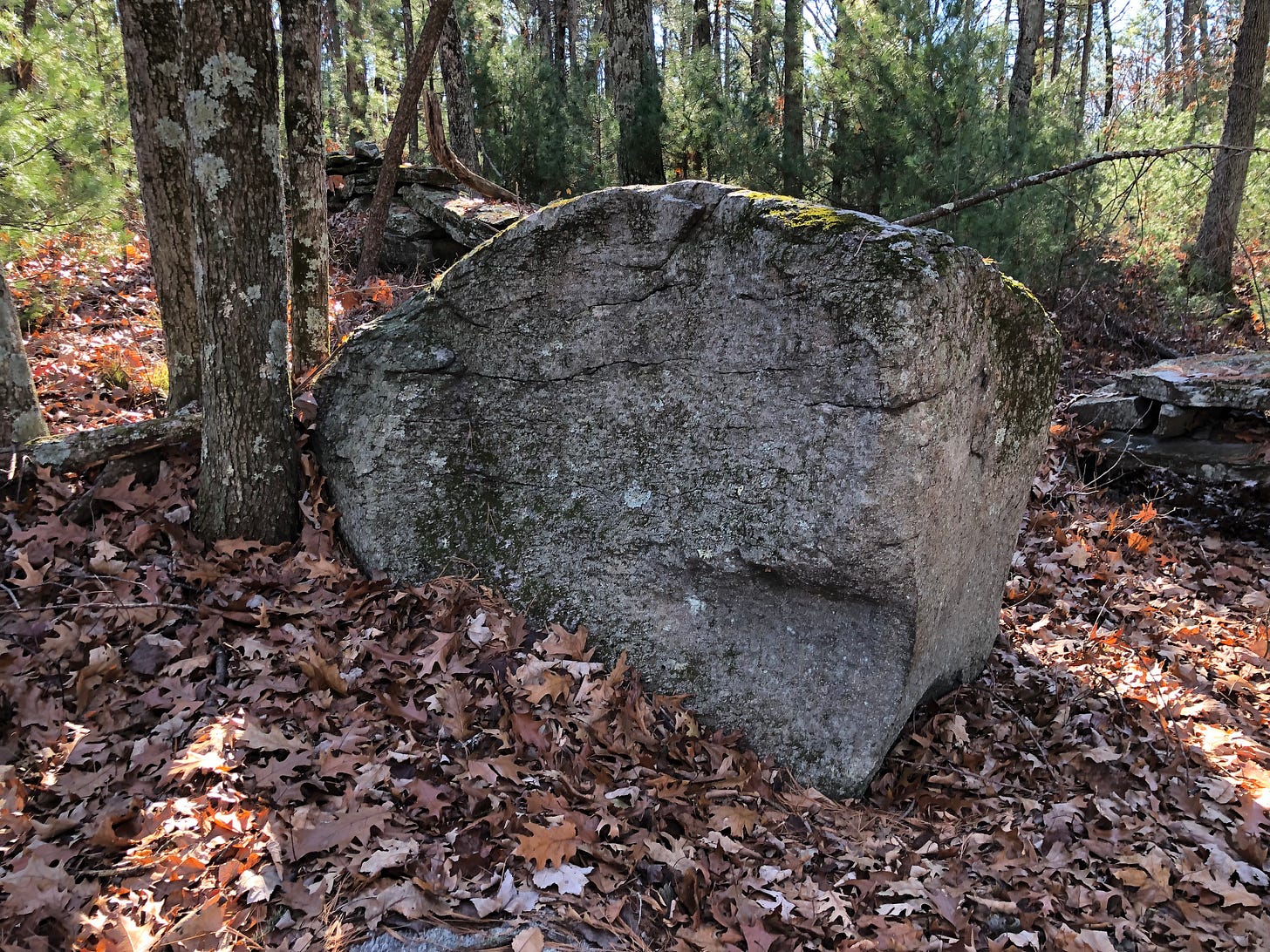
As I finished climbing and made my way around the eastern side of the somewhat circular hilltop, I could not shake a developing impression that the boulders on this eastern side were all actually pointing up and in towards the center, toward the top of the hill. This was only an impression, but it would be worth a check in the future, if the stones remain.
Geologists like to proclaim, “Those are glacial erratics!” whenever we point to boulders which are seemingly out of place on the landscape in New England. My answer is, “Of course they are. And then?”
People were here for at least 10,000 years, and millions of people lived on this land over that period of time. We know of some living specifically in this area, in the nearby (though now-destroyed) Flagg Rockshelter, some 5000 years ago.
Those indigenous peoples built a well-documented stone wall, excavated and dated by archaeologists before the Rockshelter and surrounding ledge were blown up to make way for a highway access road. Like you do.
(Click this sentence to go to a downloadable pdf report called Ancient Winters on the Massachusetts state site to read more about the Flagg Rockshelter Dig).
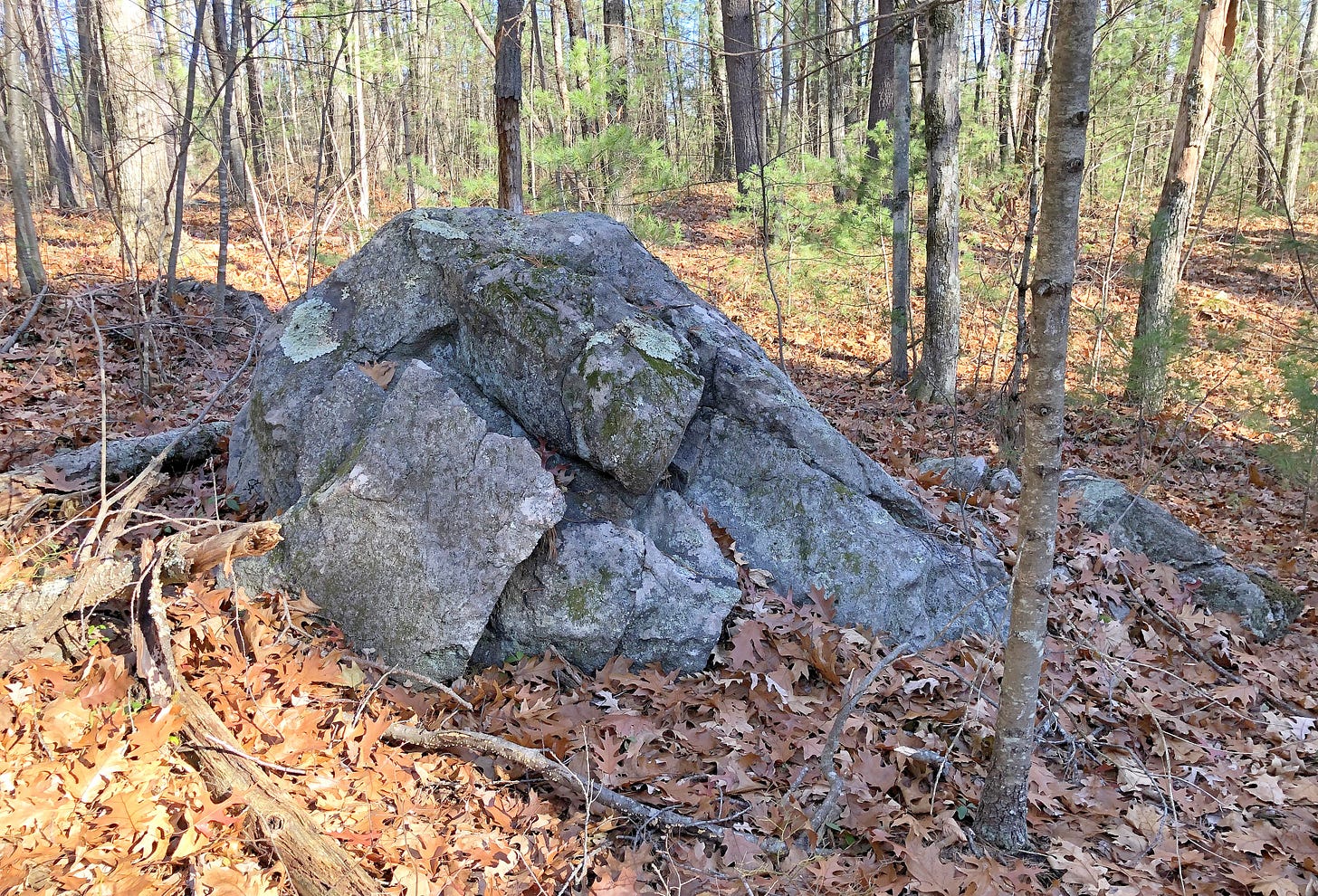
Do you think we can allow for Indigenous peoples having moved some stones around? Given that, on this hilltop, we’re a mere stone’s throw from an “Indian Stone” – Sleeping Rock? And another, King Philip’s Rock, is found just south of the pond?
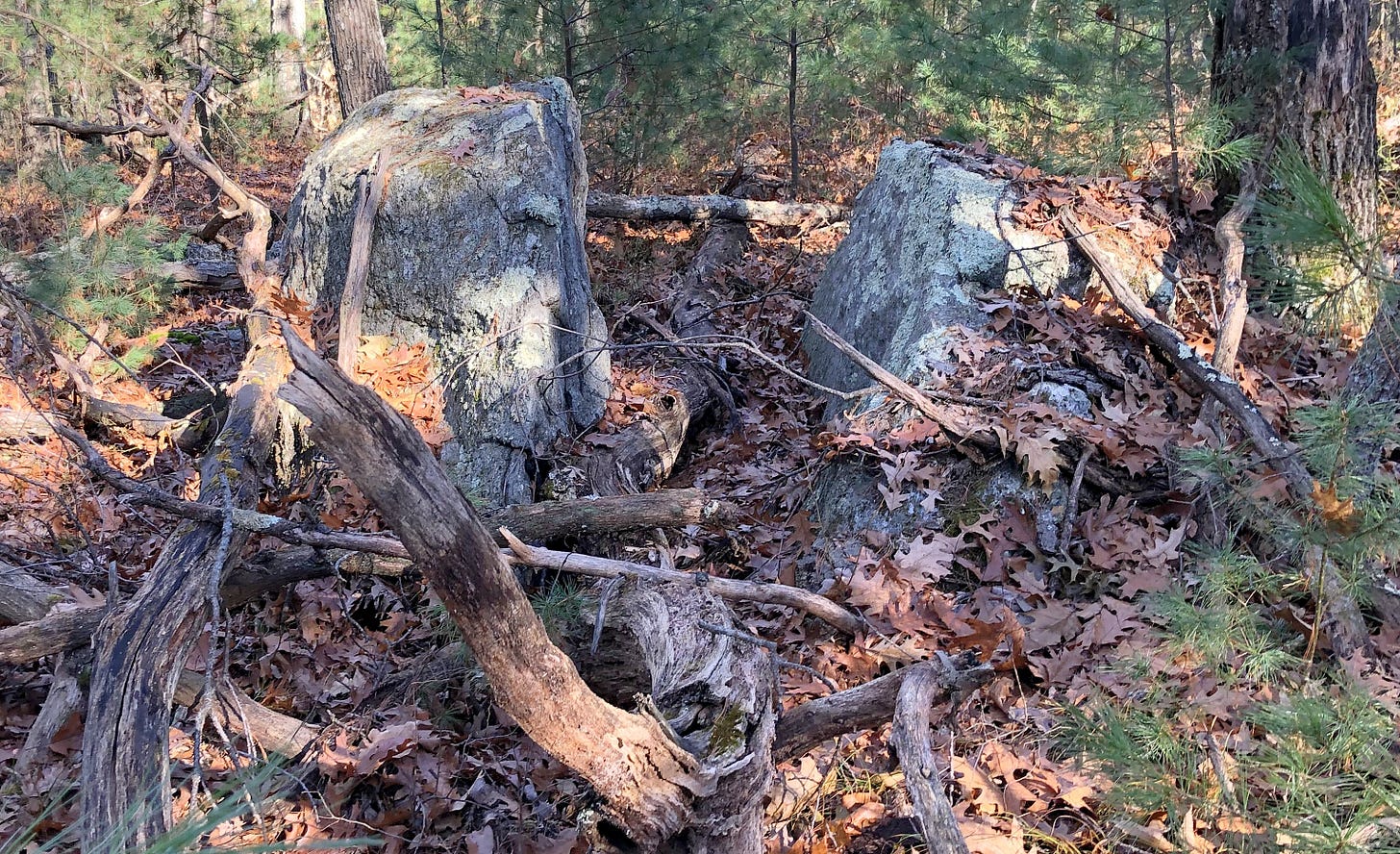
They seem to have moved some stones around the summits of Sawyer Hill. There are curious stones all around the crest of this hill which seem to point upward.
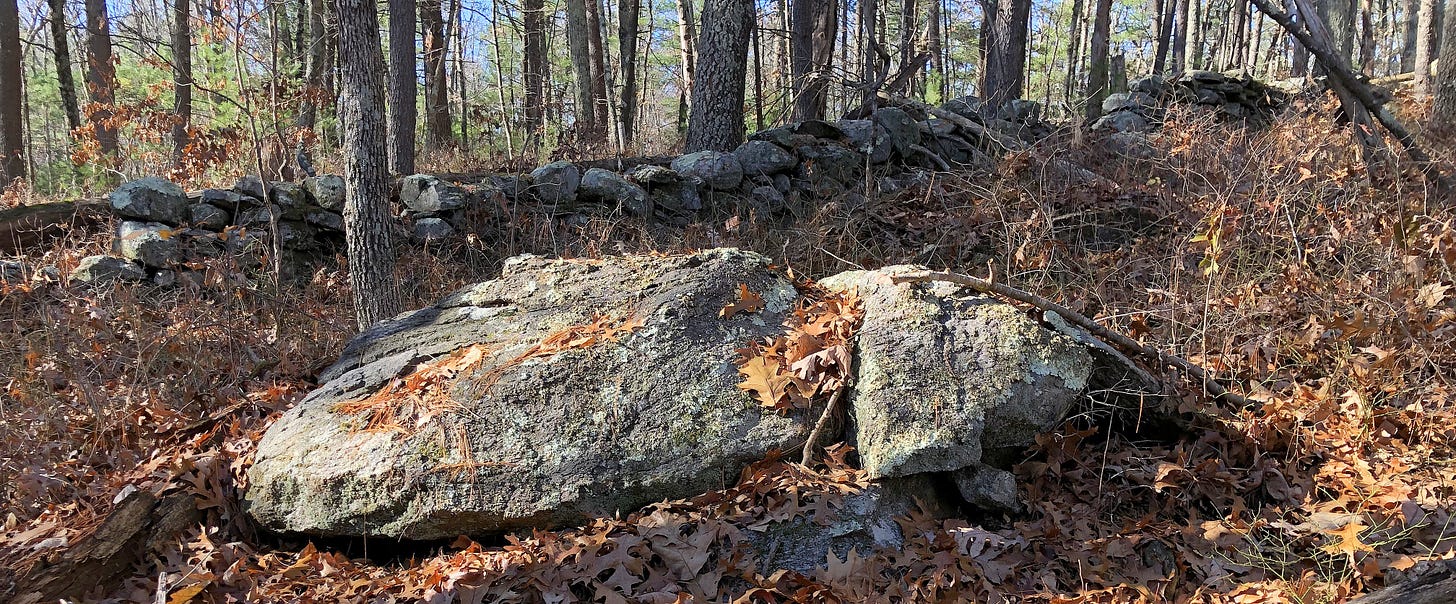
And… the stones and boulders on the western side of the stone row are even a bit more curious-looking than these on the east.





